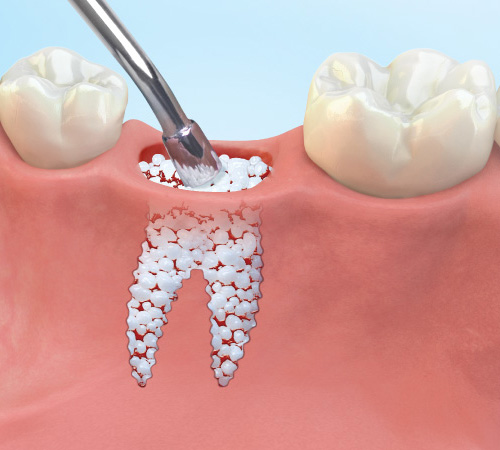Dentists try to preserve existing teeth structure. Teeth may be extracted if:
- Tooth decay has caused extensive tooth damage and cavity
- Gum infection is present with signs of oral disease, such as periodontitis and caries
- A tooth is broken and not suitable for tooth restoration
- An impacted wisdom tooth is unhealthy
- Dental implants with artificial teeth replacement, bridges, crowns or dentures are healthier
- A patient chooses and consents to this treatment option
Tooth Extraction and Treatment Options
Patients have a range of treatment options to consider in replacing missing teeth that extracted due to ill health. Treatment options include:
- Bridge anchored to dental crowns on either or one side of the missing tooth
- Temporary, partial or full dentures with choices in flexible and acrylic dentures
- Dental implants to replace missing tooth roots and secure either crowns, bridges or dentures in place
- Orthodontic care to improve bite function
- Cosmetic dentistry combination of treatments
What happens after the tooth is extracted?
After an extraction, the gum tissue will usually bleed for a short period of time; to stem the bleeding the dentist will usually encourage the patient to bite down on a cotton wool pad, which will also absorb the blood. In some cases, the dentist may place a small stitch in the tissue but this is not always needed. If you have had local anaesthetic, you will usually be free to leave when the bleeding has stopped; this usually only takes around 15 minutes.
As the anaesthetic wears off you may experience mild pain and discomfort; your dentist will usually recommend you take over the counter pain relief to ease these symptoms.
Will I be able to eat and drink normally?
Your dentist will discuss eating and drinking with you after the procedure; most dentists recommend that you avoid drinking or eating very hot foods until the anaesthetic has worn off, as the numbness may cause you to burn your mouth. For the first 24 hours after the extraction, you should try and stick to soft foods and avoid chewy and hard foods. After 24 hours, your mouth should feel completely normal and you should be able to eat and drink normally.
The recovery process
Most people recover quickly after a tooth extraction; dentists recommend that patients avoid smoking and drinking alcohol for the first few days afterwards and stick to soft foods. Over the counter pain relief can be taken to ease any pain. It is important to keep the mouth as clean as possible after the extraction; this will help to prevent infection. Patients should brush their teeth and rinse their mouth on a regular basis. Patients that have had stitches will be advised to return to their dentist after a period of time to have the stitches removed.
Are there any risks involved?
Tooth extractions are a routine procedure and are generally considered very safe. However, as with all procedures there is a possibility of side-effects and complications but your dentist will explain these before you have the procedure. Side-effects are generally very mild and most people find they subside very quickly after the procedure; examples of possible side-effects include:
- Swelling around the area where the tooth was extracted
- Tenderness in the gums
- Stiffness in the jaw
- Mild pain
- Light bleeding
For further information or to book an appointment, call us today on +7 495 150 69 92
